While many are familiar with the Seven Wonders of the World, Ireland offers its own enchanting wonders waiting to be discovered.
Ireland, celebrated for its rich history and heartfelt hospitality, invites you to experience its allure by visiting its top attractions. Enhance your journey with a luxurious stay at one of the exquisite properties in Ireland's Blue Book collection.
Below, we've curated a list of Ireland's seven must-see wonders, each paired with a recommended 'must-stay' destination from the Blue Book collection.
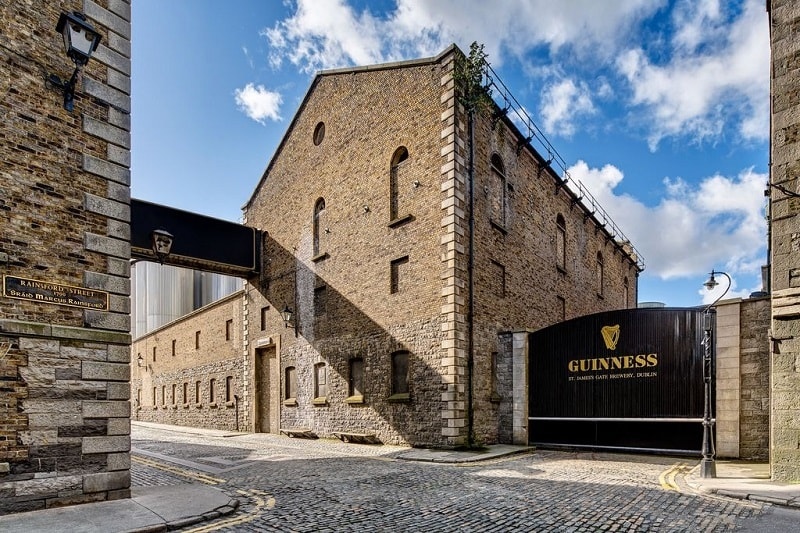
Guinness Storehouse, Dublin City
The Guinness Storehouse, a remarkable piece of history dating back to 1904, was initially designed to facilitate Guinness's fermentation process. Embodying the distinctive style of the Chicago School of Architecture, its robust steel beams underpin its grandeur. For over eight decades, this architectural marvel played a pivotal role in crafting the renowned Guinness stout. Fast forward to November 2000, and the building was transformed into an iconic, immersive visitor center, nestled in the vibrant heart of Dublin's Liberties area.
For those seeking accommodation in Dublin, a variety of exquisite options await. The elegant 5-star Merrion Hotel offers a luxurious retreat in the city's bustling center. Alternatively, The The Wilder Townhouse provides a charming stay close to attractions like St Stephen's Green, Barberstown Castle, and Cliff at Lyons—a mere short drive from Dublin. For a more intimate seaside experience, the quaint - King Sitric Townhouse in the picturesque fishing village of Howth promises breathtaking sea views and a serene escape.

Newgrange Neolithic Tomb, Co. Meath
Newgrange stands as a testament to ancient craftsmanship, dating back over 5,000 years to around 3,200 B.C. Remarkably, it predates both Stonehenge and the Great Pyramids of Giza, reflecting the ingenuity of a thriving farming community in the fertile Boyne Valley during the Neolithic or New Stone Age.
Together with Knowth and Dowth, Newgrange is designated as a World Heritage Site, highlighting their collective significance.
For those drawn to the allure of Ireland's rich history,Tankardstown House, located just outside Slane, offers a perfect base. Its proximity to Newgrange makes it an ideal retreat for exploring the Royal County of Meath, home to iconic sites like the Hill of Tara and the historic crosses at Kells. Meanwhile, Ghan House, nestled in the medieval charm of Carlingford, presents another enchanting accommodation choice for those eager to delve into the mysteries of Ireland's Ancient East.
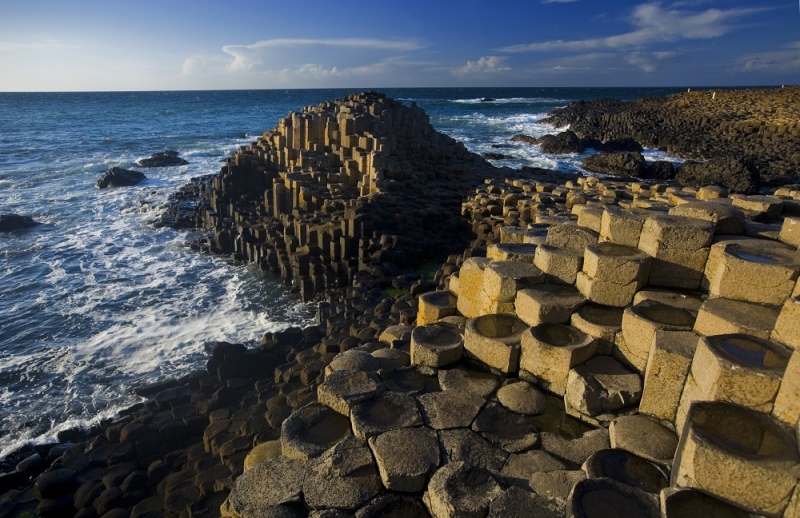
Giant's Causeway, Co. Antrim
Since earning its World Heritage status in 1986, The Giant's Causeway has captivated visitors as the crowning jewel of Antrim's stunning northern coast. Legend speaks of the mythical giant Finn McCool creating this extraordinary rock formation to challenge a rival giant in Scotland. Yet, the truth is equally fascinating: this geological wonder emerged from volcanic activity around 60 million years ago. Today, it's not just a marvel of nature but also a sanctuary for rare plants and animals.
While exploring the enchanting Northern coast, a visit to Bushmills Whiskey Distillery is a must. Here, you can personalize a bottle of whiskey, making for a unique keepsake. In the quaint village of Bushmills, the inviting Bushmills Inn beckons with its cozy firesides, plush bedrooms, and signature hot toddies.
For those planning a trip to the Giant's Causeway, The Old Inn offers a convenient location paired with luxurious spa amenities for indulgent relaxation
Just a short jaunt from the Antrim coastline lies Ardtara Country House, celebrated as one of Northern Ireland's premier country house retreats, promising an exquisite stay amid serene surroundings
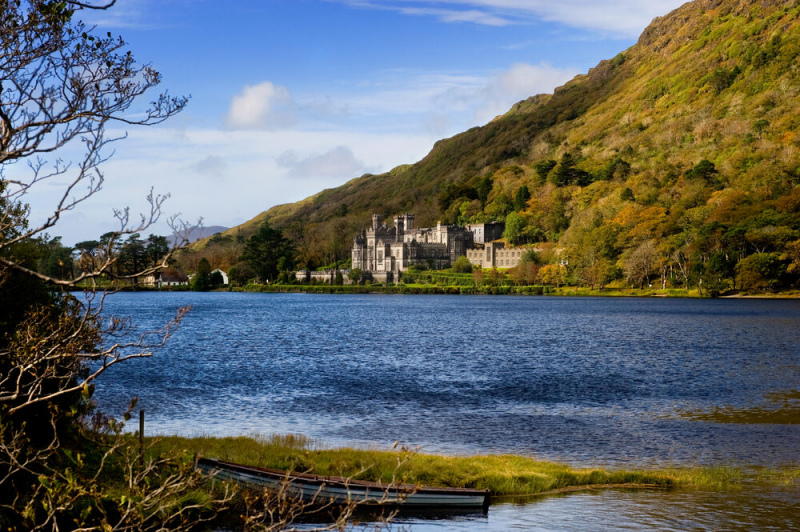
Connemara National Park & Kylemore Abbey, Co. Galway
Nestled in the picturesque County Galway, Connemara National Park sprawls across 2,957 hectares of breathtaking landscapes, encompassing majestic mountains, expansive boglands, verdant heaths, and serene woodlands. Among its notable peaks are Benbaun, Bencullagh, Benbrack, and Muckanaght, which form part of the renowned Twelve Bens or Beanna Beola range. The park's rich terrain once belonged to the historic Kylemore Abbey Estate , now a cherished destination showcasing the Benedictine nuns' home and heritage, making it a must-visit for many travelers.
For those seeking a memorable stay in Connemara, four enchanting country house hotels await: Cashel House, Rosleague Manor , Delphi Lodge and Currarevagh House . Each exudes its own unique charm and character, promising a comfortable retreat amidst Ireland's stunning west.
Not far from Connemara, the Céide Fields, in Ballycastle, Co. Mayo, offer a fascinating journey back in time. Dating back over 5,500 years, these ancient field systems stand as the world's oldest known, earning UNESCO World Heritage status in 1992. This remarkable Neolithic landscape, buried beneath a peat blanket, preserves stone field walls, houses, and megalithic tombs across vast expanses.
For a memorable stay in historic Mayo, consider Enniscoe House, a listed heritage gem; the Ice House, a modern and stylish lodge; Clare Island Lighthouse, a captivating heritage beacon; or Belleek Castle ,an iconic fortress. Each promises a unique experience and is conveniently located within easy reach, allowing you to explore Mayo's rich history and natural beauty at your leisure.
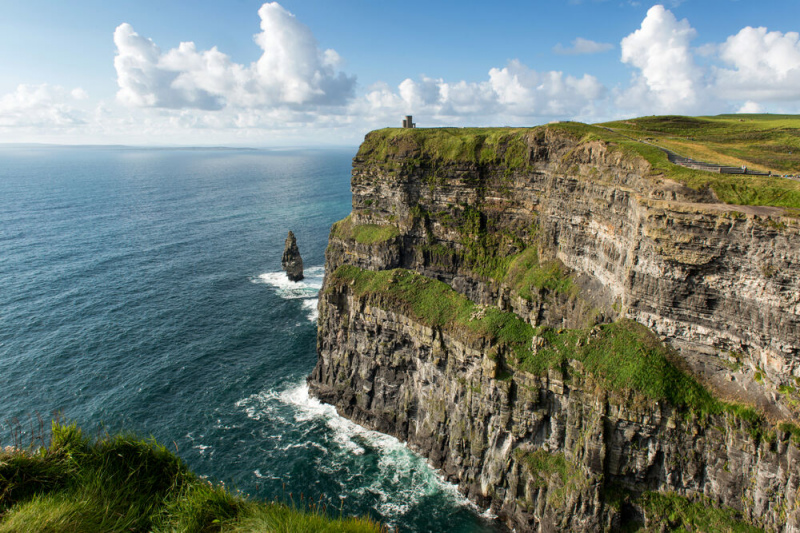
Cliffs of Moher, Co. Clare
The majestic Cliffs of Moher are 214m high at their highest point and range for 8 kilometres along the western coast of County Clare. The Cliffs of Moher take their name from a ruined promontory fort "Mothar", which was demolished during the Napoleonic wars to make room for a signal tower.
Also in Clare, a visit to the Burren is a must. It is an expansive area of limestone rock, including imposing mountains, as well as tranquil valleys with gently meandering streams. With its extraordinary array of flora and wildlife, and megalithic tombs and monuments older than Egypt's pyramids, the Burren creates a tapestry of colour and a seductively magical aura.
The beautiful Gregans Castle - an old manor house perched atop Corkscrew Hill, which is a haven of peace and tranquillity and offers visitors inspiring views of the unique Burren Landscape.
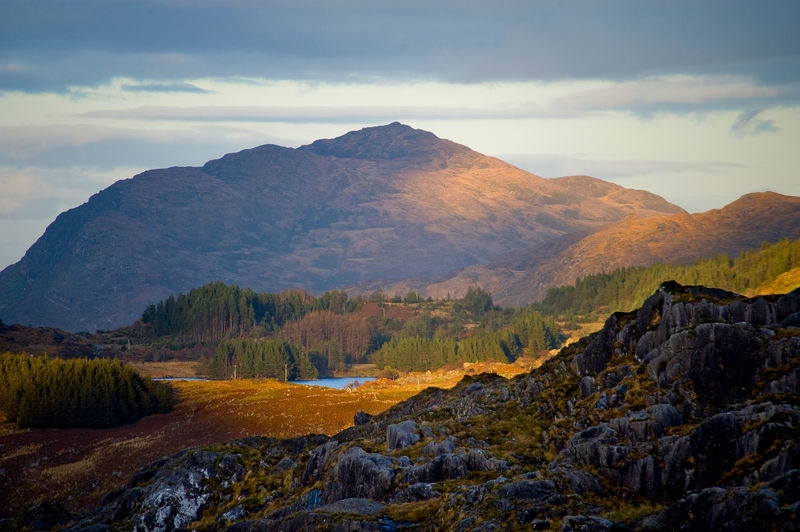
Ring of Kerry
The Ring of Kerry (or Iveragh Peninsula, to give it its correct name) is part of an unspoiled region of Ireland that has attracted visitors for hundreds of years. Its spectacular beauty is beyond question and it is a natural centre for outdoor pursuits. The Ring of Kerry has some of the finest beaches in Europe and many sites, such as Ancient Monasteries, Iron Age Forts, and Ogham Stones, which provide an insight into the ancient heritage of Ireland.
The Gap of Dunloe was carved by a huge glacier thousands of years ago, and is roughly seven miles in length, with the Tomies and Purple mountains on the left and the McGillycuddy Reeks on the right. Don't miss the "Ladies View" so named after Queen Victoria's ladies-in-waiting who stopped to look at the beautiful scenery from this spot during the Queen's visit to Killarney in 1861.
It would be a shame to visit Kerry without experiencing the unique hospitality of the 5 star Park Hotel in Kenmare, where brothers John and Francis Brennan look after their guests with the utmost care and attention to detail, or alternatively their property The Lansdown Kenmare. Hidden away on the shores of Caragh Lake you will find an equally warm welcome in the enchanting Carrig Country House, and for those who wish to stay in the vibrant centre of Killarney town, we recommend the Killarney Royal which is in the centre of the town or, Cahernane House Hotel which is just outside the town. The Estate at Dromquinna is a stunning waterside estate unlike anything else. Set on 40 acres of parkland planted in the 1800s, the Estate offers an abundance of activities and facilities.
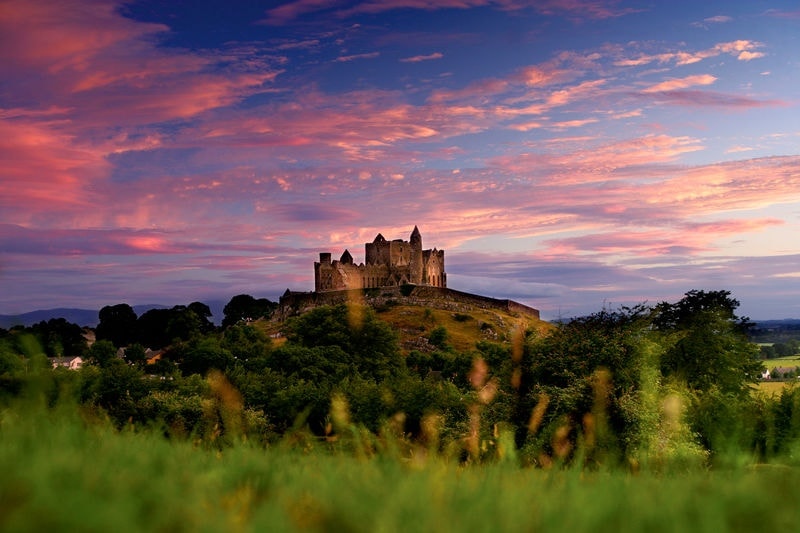
Rock of Cashel, Co. Tipperary
Reputedly the site of the conversion of Aenghus the King of Munster by St. Patrick in the 5th century AD., long before the Norman invasion, The Rock of Cashel was the seat of the High Kings of Munster. Most of the buildings on the site date from the 12th and 13th centuries when the rock was gifted to the Church. The buildings represent both Hiberno-Romanesque and Germanic influences in their architecture.
If you're looking to stay somewhere nearby, Castle Durrow, a converted 300-year-old mansion with stunning surrounding gardens and beautiful individually decorated rooms and Cashel Palace, a magnificent 1732 Palladian manor with view of the Rock of Cashel are close by.